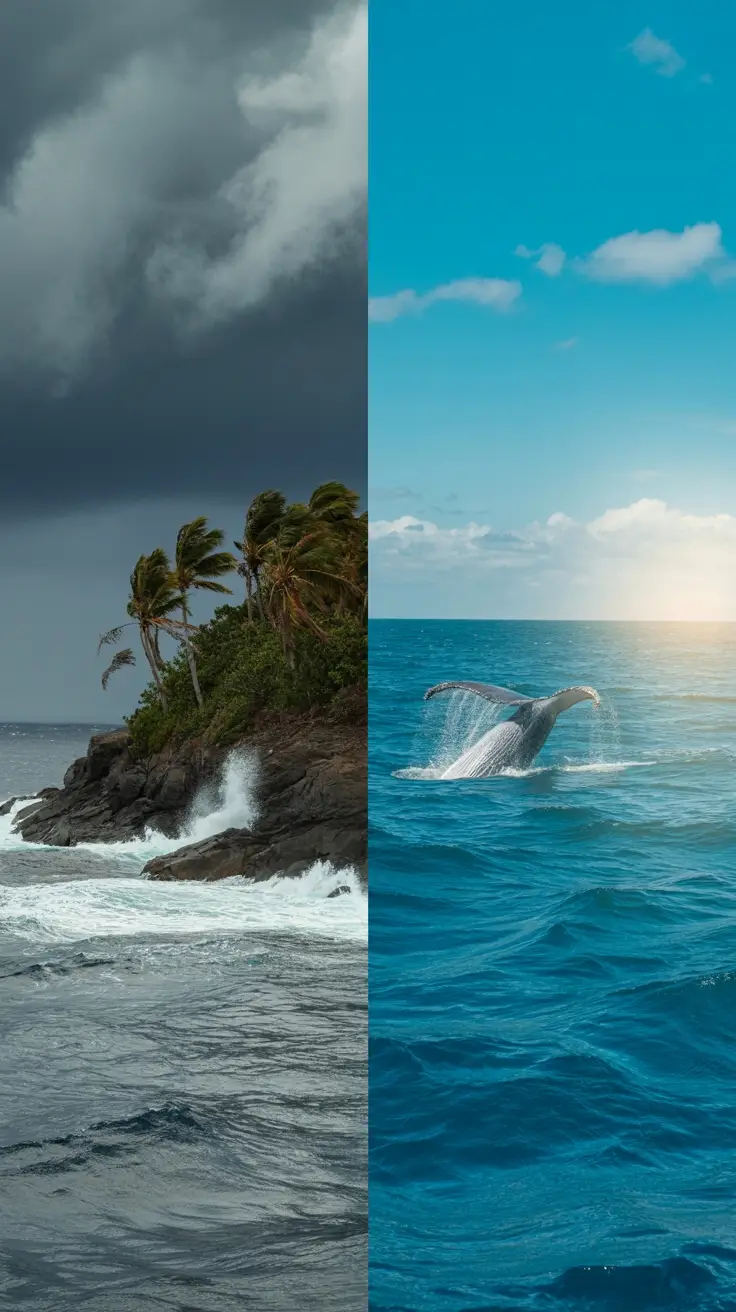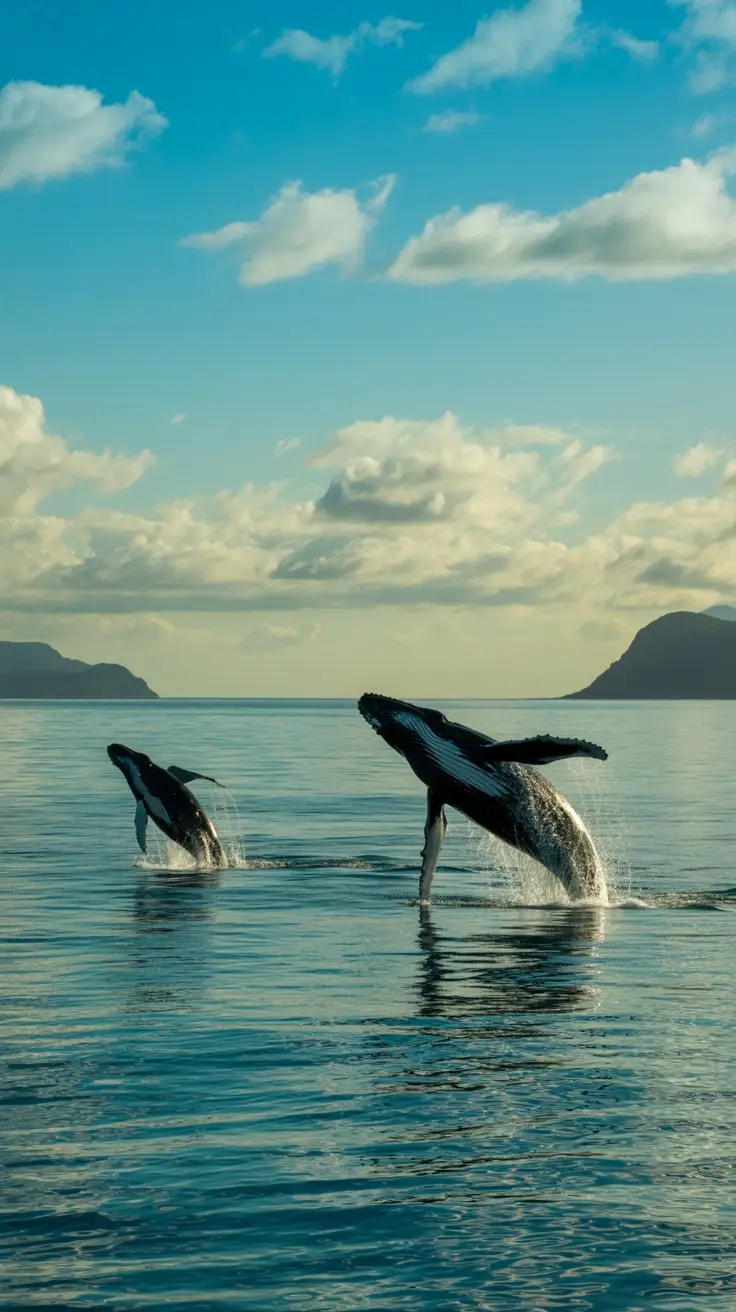I’ve spent countless hours watching humpback whales breach in Samaná Bay while simultaneously keeping one eye on the weather radar, and I can tell you that timing your visit to the Dominican Republic’s most spectacular peninsula requires careful planning. The eternal dance between whale migration patterns and Caribbean hurricane seasons creates a fascinating dilemma for savvy cruise passengers.
Understanding Samaná’s Climate Patterns
Samaná enjoys a tropical maritime climate that’s generally more pleasant than you might expect. The peninsula benefits from consistent trade winds that provide natural air conditioning, making even the warmest months bearable. Average temperatures hover between 75-85°F year-round, with humidity levels that fluctuate more dramatically than the thermometer.
The region experiences two distinct seasons: the dry season (December through April) and the wet season (May through November). However, don’t let the term “wet season” scare you off entirely – rainfall often comes in short, intense bursts that clear quickly, leaving behind crystal-clear skies and that intoxicating post-rain tropical fragrance.
Whale Season: Nature’s Greatest Show
From mid-January through late March, Samaná transforms into the Caribbean’s premier whale-watching destination. Thousands of North Atlantic humpback whales migrate here to mate, give birth, and nurse their young in the warm, protected waters of Samaná Bay. This spectacle coincides perfectly with the dry season, creating ideal conditions for both marine life observation and cruise ship operations.
The whales are most active during morning hours, typically between 8 AM and 11 AM, when the waters are calmest. Smart cruise itineraries often anchor early to take advantage of these prime viewing times. The males put on incredible displays – breaching, tail slapping, and singing their haunting songs that can be heard underwater from miles away.
Insider Whale Watching Tips
- Book whale watching excursions immediately upon boarding – they sell out fast during peak season
- Bring polarized sunglasses to reduce glare and spot whales more easily
- Position yourself on the ship’s starboard side when entering Samaná Bay for the best initial viewing opportunities
- Don’t forget motion sickness medication – even calm waters can feel choppy when you’re focused on the horizon
Hurricane Season Reality Check

The Atlantic hurricane season officially runs from June 1st through November 30th, with peak activity typically occurring between August and October. However, Samaná’s geographic position offers some protection from the worst storms, as the peninsula sits in a relatively sheltered pocket of the Caribbean.
Most hurricanes that affect the Dominican Republic pass to the north or south of Samaná, though tropical storms and their outer bands can still bring heavy rain and rough seas. The good news? Modern cruise ships have sophisticated weather routing systems, and captains are masters at avoiding storms or adjusting itineraries when necessary.
Hurricane Season Advantages
Cruise during hurricane season and you’ll discover some unexpected perks:
- Significantly lower cruise fares and fewer crowds
- Lush, green landscapes at their most vibrant
- Dramatic cloud formations and spectacular sunsets
- Cooler temperatures due to increased cloud cover
- Excellent surfing conditions on the Atlantic coast
Monthly Weather Breakdown
| Month | Average Temp (°F) | Rainfall (inches) | Whale Activity | Hurricane Risk |
|---|---|---|---|---|
| January | 77-82 | 2.1 | Peak | None |
| February | 77-83 | 1.8 | Peak | None |
| March | 78-84 | 2.3 | High | Very Low |
| April | 79-85 | 3.2 | Low | Very Low |
| May | 80-86 | 7.1 | None | Low |
| June | 81-87 | 6.8 | None | Low |
| July | 81-88 | 6.9 | None | Low |
| August | 82-88 | 7.4 | None | Moderate |
| September | 81-87 | 8.1 | None | High |
| October | 80-86 | 7.8 | None | Moderate |
| November | 79-84 | 5.2 | None | Low |
| December | 78-83 | 3.1 | Beginning | Very Low |
Best Time to Visit: The Verdict
For first-time visitors and whale enthusiasts, January through March represents the sweet spot – dry weather, calm seas, and incredible marine life encounters. February typically offers the best combination of perfect weather and peak whale activity.
Adventure seekers and budget-conscious travelers should consider the shoulder seasons: late November through December (pre-whale season) or April through May (post-whale season). You’ll enjoy good weather, fewer crowds, and better prices while avoiding the worst of hurricane season.
What Cruise Lines Won’t Tell You
Here’s some insider knowledge that might surprise you: Samaná’s weather can vary dramatically between the northern Atlantic coast and the southern Caribbean side of the peninsula. The town of Samaná itself sits on the sheltered bay, while Las Terrenas faces the open Atlantic. This means you could experience completely different weather conditions just 20 miles apart.
Additionally, the mountainous terrain creates microclimates that can produce brief afternoon showers even during the dry season. Los Haitises National Park, a popular shore excursion destination, receives significantly more rainfall year-round due to its mangrove ecosystem.
Essential Gear for Samaná Weather
Having the right equipment can make or break your Samaná experience. For capturing those perfect whale breach moments, you’ll need waterproof binoculars that can handle sea spray and sudden weather changes. Professional photographers swear by their gear for documenting these incredible moments.
Navigation through Samaná’s diverse terrain requires proper footwear. From the mangrove walkways of Los Haitises to the rocky paths leading to El Limón Waterfall, having the right shoes is crucial for both safety and comfort.
Cultural Considerations and Local Holidays
Timing your visit around local celebrations can enhance your experience significantly. The Dominican Republic observes several unique holidays that might affect tours, shopping, and local attractions. For a complete list of Dominican Republic public holidays, plan accordingly as many businesses close during these celebrations.
Carnival season (typically February) brings vibrant street parties and cultural performances, while Easter week (Semana Santa) sees massive domestic tourism that can impact availability of local services.
Packing Essentials by Season
Dry Season (December-April)
- Lightweight, breathable clothing
- Strong sunscreen (SPF 30+)
- Light sweater for evening breezes
- Comfortable walking shoes
- Binoculars for whale watching
- Waterproof dry bag for boat excursions
Wet Season (May-November)
- Quick-dry clothing
- Waterproof day pack
- Sandals with good grip
- Compact umbrella
- Insect repellent
Comparing Samaná to Other Dominican Ports

Samaná’s weather patterns differ significantly from other Dominican cruise destinations. While Amber Cove on the northern coast experiences more consistent trade winds, Samaná’s protected bay offers calmer conditions for whale watching. The Puerto Plata weather tends to be slightly drier year-round, but lacks the dramatic seasonal wildlife spectacle that makes Samaná special.
For those considering multiple Dominican ports, La Romana’s weather patterns are more predictable, while Santo Domingo’s urban climate can be warmer and more humid due to the city’s size and concrete infrastructure.
Weather-Related Shore Excursion Planning
Weather conditions significantly impact which Samaná shore excursions are available on any given day. Morning excursions to Cayo Levantado are almost always possible, while afternoon helicopter tours might be cancelled due to afternoon thunderstorms during the wet season.
The best Samaná activities are often weather-dependent. Snorkeling and beach activities work best during calm morning hours, while cultural experiences and indoor attractions like local markets provide excellent alternatives during brief tropical showers.
Common Questions
Can I still enjoy Samaná if I visit during hurricane season?
Absolutely! While there’s inherent weather risk, the majority of days during hurricane season are perfectly pleasant. Cruise lines have excellent safety protocols, and you’ll benefit from lower prices and fewer crowds. Just maintain flexible expectations and pack accordingly.
How rough are the seas during whale season?
Samaná Bay is naturally protected, making it one of the calmest whale-watching destinations in the Caribbean. Even sensitive passengers typically handle the gentle motion well, though morning excursions tend to be smoother than afternoon ones.
What happens if weather cancels my whale watching excursion?
Most operators offer alternative dates or partial refunds. However, true cancellations are rare during peak season. More commonly, tours might be shortened or rerouted to more protected waters.
Is the weather significantly different on the Atlantic vs. Caribbean sides of the peninsula?
Yes, remarkably so! The Atlantic coast (Las Terrenas area) typically experiences more wind and waves, while the Caribbean side (Samaná Bay) remains calmer. This affects everything from swimming conditions to restaurant outdoor seating comfort.
How accurate are weather forecasts for Samaná?
Local forecasts are generally reliable 2-3 days out, but tropical weather can change rapidly. The mountainous terrain creates microclimates that can confound even sophisticated prediction models. Local knowledge often trumps satellite data.
Photography Tips for Different Weather Conditions
Samaná’s changing weather creates incredible photography opportunities. During the dry season’s clear skies, whale photography requires patience and the right equipment. During the wet season, dramatic cloud formations and rainbow opportunities abound after brief showers.
For those serious about capturing Samaná’s natural beauty, consider checking out our Samaná Instagram spots guide, which includes weather-specific photography tips for each location.
Budget Considerations by Season
Weather patterns directly impact your cruise budget. Peak whale season (January-March) commands premium prices for both cruises and shore excursions. Hurricane season offers significant savings but requires flexible planning. For detailed cost breakdowns, our Samaná budget guide provides comprehensive pricing information across all seasons.
The magic of Samaná lies not just in its predictable seasons, but in its delightful surprises. You might witness a spectacular whale breach during an unexpected December sighting, or discover that a brief hurricane season shower has created the most dramatic rainbow you’ve ever seen. The key is embracing the Caribbean’s natural rhythms while being prepared for its occasional curveballs. After all, the best travel stories often come from the moments when Mother Nature decides to improvise her own itinerary.
